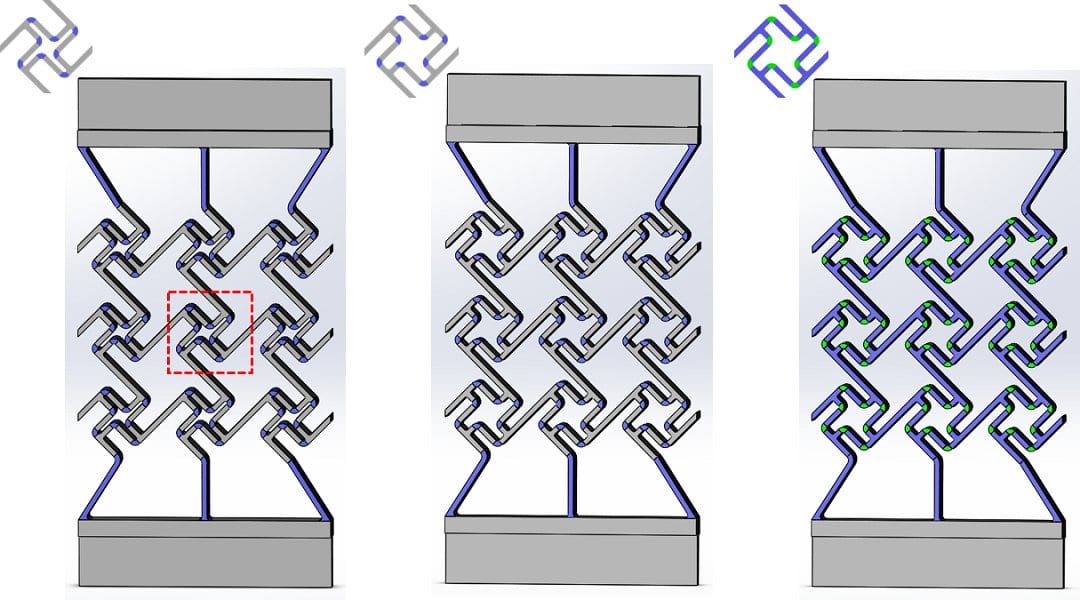Cephalopods including squid, cuttlefish, and octopus, have amazing camouflage capability due to responsive chromatophore organs on the skins. The major mechanical components of a chromatophore organ is a single pigment-containing chromatophore cell, and four to twenty four radially arranged muscle fibers. Under muscular fiber contraction, the chromatophore cells experience dramatic and rapid change in area during deformation, and therefore the pigment translocation. More interestingly, by selectively and sequentially expanding and retracting distinct groups of chromatophores, skin color can vary in a large range.
Inspired by this mechanism, artificial chromatophores were designed to achieve dramatic volume change and a unique sequential cell opening mechanism. The concepts of auxetic effect (i.e. negative Poisson’s ratio effect) and chiral geometry were used to design the innovative soft metamaterials. Auxetic materials are an unusual materials which expand in one direction when they are stretched in another direction. This unusual auxetic effect is due to the negative Poisson’s ratio.
Opposite to rubbery materials, auxetic material can have dramatic volume change and high resistance to shearing deformation. Recently, it was found that chiral geometry can generate auxetic effect via chirality-induced rotation. By tailoring the chiral geometry at two different levels, when loaded only in one direction the cells with different sizes in the new designs can open sequentially. The order of the cell opening can also be tuned via geometry and material combination. The new design concepts can be used in smart metamaterials for actuation, drug delivery and color change for camouflage.
The new materials designed have broad potential applications in designing biomedical scaffolds, bandages, drug reservoirs and stents, innovative foldable or deployable devices, smart responsive composites, actuators and sensors, and stretchable soft electronic materials. In this study, specimens of the new designs were fabricated via multi-material 3D printing. Potential applications of sequential particle release mechanisms were systematically explored. Another potential application in the conceptual design of “meta-chromatophores” for color changing was also studied.
This work was supported by a recent NSF/CAREER award to explore the mechanics of auxetic chiral metamaterials via innovative design and 3D printing. The fast development of 3D printing technology enables easy fabrication of designs with complicated geometry and materials combination. It provides a fast-prototyping tool. To prove the design concept, design motifs can be quickly printed and mechanical experiments can be performed to quantitatively evaluate the properties and behaviors of the new designs.

















